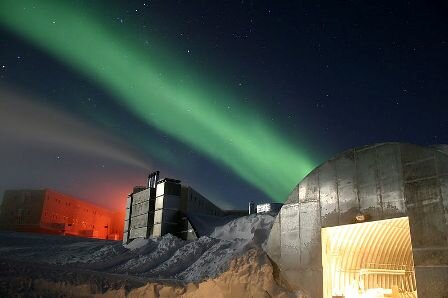One of these following facts about the Aurora Borealis should probably give you much information about this phenomena. The Aurora Borealis is a natural light display in the sky, especially in the high latitude regions, caused by the collision of solar wind and magnetospheric charged particles with the high altitude atmosphere (thermosphere). Most auroras occur in a band known as the auroral zone, which is typically 3° to 6° wide in latitude and observed at 10° to 20° from the geomagnetic poles at all local times (or longitudes), but often most vividly around the spring and autumn equinoxes. Furthermore, to get to know more about this phenomena, here are some other facts about the Aurora Borealis you might be interested in.
Facts about the Aurora Borealis 1: Name
Their official name is the “aurora borealis.” “Aurora” comes from the Roman goddess associated with the dawn; “borealis” is derived from from the Greek word for the north wind, “boreas.”
Facts about the Aurora Borealis 2: Solar Winds
Auroras are associated with the solar winds that flow past Earth. These winds flow out from the Sun and contain plasma particles (ionized gas) which gets pulled into the Earth’s magnetic pole fields.
Facts about the Aurora Borealis 3: Collisions
As they accelerate towards the Earth, collisions occur between these ion particles and nitrogen and oxygen atoms in our atmosphere, releasing energy in the form of amazing aurora lights.
Facts about the Aurora Borealis 4: Brief and Faint Noises
Old folktales have suggested that the aurora can create brief and faint noises such as claps, static, or crackles heard on rare occasions by those on the ground. Recent scientific research has shown that this could in fact be true with clapping sounds recorded during an aurora display.
Facts about the Aurora Borealis 5: Diffuse and Discrete
Auroras or auroraeare classified as diffuse and discrete. The diffuse aurora is a featureless glow in the sky that may not be visible to the naked eye, even on a dark night. It defines the extent of the auroral zone. The discrete auroras are sharply defined features within the diffuse aurora that vary in brightness from just barely visible to the naked eye, to bright enough to read a newspaper by at night.
Facts about the Aurora Borealis 6: Curtains
The aurora appears frequently either as a diffuse glow or as “curtains” that approximately extend in the east-west direction. At some times, they form “quiet arcs”; at others, they evolve and change constantly. Each curtain consists of many parallel rays, each lined up with the local direction of the magnetic field lines, suggesting that auroras are shaped by Earth’s magnetic field.
Facts about the Aurora Borealis 7: Striations
The similarity to curtains is often enhanced by folds called “striations”. When the field line guiding a bright auroral patch leads to a point directly above the observer, the aurora may appear as a “corona” of diverging rays, an effect of perspective.
Facts about the Aurora Borealis 8: Frequency of Occurence
Auroras are occasionally seen in temperate latitudes, when a magnetic storm temporarily enlarges the auroral oval. Large magnetic storms are most common during the peak of the eleven-year sunspot cycle or during the three years after that peak.
Facts about the Aurora Borealis 9: Visual Presence
However, researchers from Aalto University in Finland published a study in 2012 saying that they recorded “clapping” sounds correlated to the visual presence of the aurora borealis, and that these sounds were produced approximately 70 metres (230 ft) above ground.They suggested that these sounds come from the solar particles associated with creating the aurora.
Facts about the Aurora Borealis 10: Popular Culture
After the Battle of Fredericksburg, the lights could be seen from the battlefield that night. The Confederate Army took it as a sign that God was on their side during the battle as it was very rare that one could see the Lights in Virginia. The painting Aurora Borealis (1865) by American landscape painter Frederic Edwin Church is widely interpreted to represent the conflict of the American Civil War.
Hope you would find those Aurora Borealis facts really interesting, useful and helpful for your additional reading.










 www.PortlandPayday.Loans
www.PortlandPayday.Loans